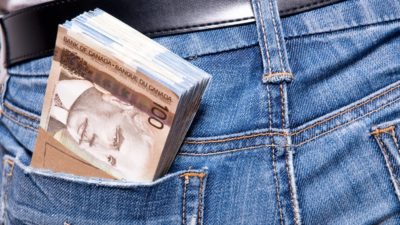The recovery in oil prices over the past year is finally starting to show up in the results of companies that took a big hit through the downturn.
Let’s take a look at Husky Energy Inc. (TSX:HSE) to see if it deserves to be on your buy list.
Operations
Husky is an integrated oil company with operations in Canada, the United States, and Asia.
In Canada, Husky’s thermal bitumen projects are located in the Lloydminster region of Saskatchewan and Alberta, with output ramping up at the Tucker Thermal and Sunrise Energy sites this year. As a result, average annual thermal production is expected to grow 12% in 2018. In Atlantic Canada, Husky and its partners have recently made oil discoveries off the coast of Newfoundland and Labrador.
Husky also owns, or is a partner in, refining operations located in Canada and the United States. The facilities produce gasoline, asphalt, jet fuel, and petrochemical feed stocks.
The Asia Pacific operations include offshore projects near China and Indonesia. The Liwan Gas Project is located 300 kilometres southeast of Hong Kong. In Indonesia, Husky is moving ahead with gas projects in the Madura Strait.
At the start of the year, Husky anticipated total average 2018 production of 320,000-335,000 barrels of oil equivalent per day (boe/d).
An additional 60,000 barrels per day (bbl/d) of production is scheduled to go online between 2019-2021, and the 75,000 bbl/d West White Rose project in the Atlantic region should see first output in 2021.
Results
Husky just reported strong results for Q2 2018. Funds from operations came in at $1.2 billion, representing a 69% increase over the same period last year and a 35% jump from Q1 2018. Adjusted net earnings rose to $474 million from $20 million in Q2 2017. Husky generated free cash flow of $500 million in the quarter, compared to $123 million last year.
Husky finished Q2 with net debt of $3 billion. The company currently trades at $21 per share at the time of writing and has a market capitalization of about $19.5 billion.
Dividend
Husky suspended its dividend during the downturn, but resumed payments earlier this year. In March, the company declared a quarterly payout of $0.075 per share. In the Q2 earnings reported, Husky said it is increasing the payout to $0.125 per share.
At the time of writing, that’s good for a yield of 2.4%.
Low net debt and a strong outlook for continued free cash flow generation should support additional increases in the distribution.
Should you buy?
Husky is back on track, and the significant development opportunities could drive major growth in the coming years, as long as commodity prices remain high enough to support the required capital program.
Husky’s stock bottomed out around $12 in early 2016, so the brave souls who bought at that time are already sitting on some nice gains. However, the recovery could still be in its early innings. Husky traded for more than $50 per share at the peak in 2008.
If you are searching for a turnaround bet in the energy sector, Husky looks attractive today.








